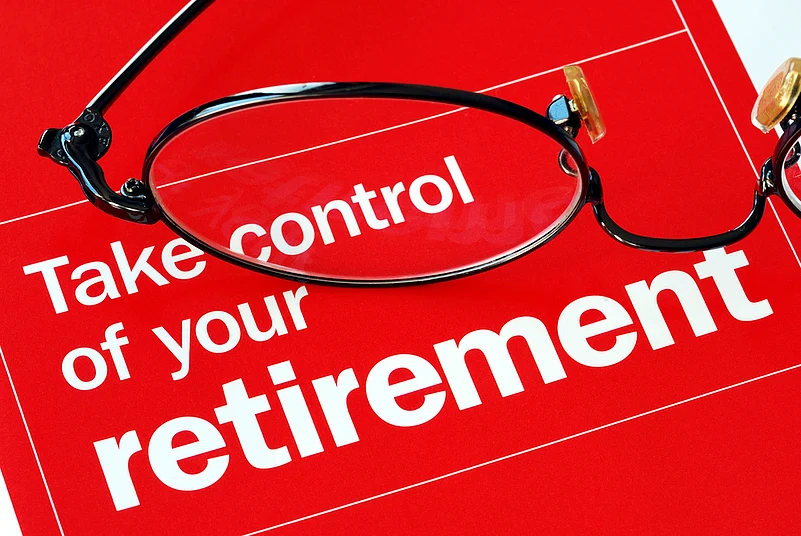I thought of commencing this column on retirement with an analogy drawn from the manner in which many infrastructure projects have been executed worldwide in recent decades: BOT. Yes, you heard that right, because planning for retirement has a lot in common with the Build-Operate-Transfer theme. “How?”, you may well ask. Well, here is the lowdown.
Build
This is where it all starts – your intention to create a wholesome, functional retirement plan. You need to conceive it exactly in line with your risk appetite. In other words, you should, first and foremost, be fully aware of how much risk you would be able to weather, given your current income level, your financial liabilities, projected revenue streams and so on.
Advertisement
On the basis of this assessment (which serves as the very foundation of your plan), you will have to devise a perfect asset allocation. Now, I fully understand that the last three words of the previous sentence is perhaps a utopian concept, thanks to the flummoxing adjective “perfect”. Achieving perfection is for the gods, we humans are far too frail and vulnerable for such a feat. Yes, but there is no harm trying, is there?
Your asset allocation, mind you, is a transient concept, and there will be numerous changes as you move along. The allocation pattern for the average investor goes through many alterations, frequently caused by one reason or another. We will not go into any of the dirty details here; but it is enough to remember that allocation is a here-and-now idea. The good thing is that changes are very often for the better.
Advertisement
Once you identify your ideal allocation, the next step is to locate the financial products that will help you take it all forward. Naturally, one is free to choose from among a plethora of products – I will, for practical purposes, divide these into two major groups, fixed-return products and variable-return products.
And that, dear reader, brings me to the next grand stage of retirement planning, the “O” in “BOT”.
Operate
In terms of operations, the investor will deal with the two classes of products I mentioned in the earlier paragraph. Fixed-return options, however, is a somewhat shrinking sphere these days. Comprising it chiefly are fixed deposits of various hues.
Now, the ordinary Indian does not need to be told about deposits; he has heard it discussed ad infinitum; indeed, entire conversations at dinner tables were conducted over the most appropriate deposits, complete with sub-topics such as friendly rates, convenient servicing and so on.
My interest, as you may have guessed already, is principally in variable-return options. Modernists who discuss these usually take comfort in the broad, general-purpose term, “market-driven performance”.
Yes, I am alluding to mutual funds and other managed products. All of these have a few things in common – these have a fund manager, these impose charges on investors, these are often distributed by professionally-guided intermediaries. In short, there are many regulations that govern their structure, sale, administration and transaction.
Advertisement
Now, your retirement plan usually has to rely on these alternatives, both guaranteed-return securities and market-driven performers. A sound mix of the two is often recommended by advisors. The latter, needless to say, have a way of presenting the choicest products. Advisory services by the best-in-class professionals normally come at a hefty price. The latter is nearly universally termed as “fees”.
As for the actual operation, the investor concerned must choose prudently. He has to create the most appropriate mix of assets. He has to monitor them as closely as possible. And, certainly, he must make the right kind of changes so as to derive the most optimum yield from his assets.
Advertisement
Such changes need to be executed in terms of buying, selling and holding of securities. Between these functions, a lot of things are bound to happen – NFOs have to be purchased, IPOs have to be applied for, under-performing holdings have to be discarded, sectoral allocations have to be tweaked. Believe me, the duties and responsibilities of an investor (towards himself) are absolutely sacrosanct – and, in this day and age, surely not easy to carry out.
Speaking of duties and responsibilities, the third aspect, Transfer, is where we make our next transition.
Transfer
This, I should warn you, is probably the most challenging aspect of the sequence we started with. Transfer of resources from the riskier to the safer, is what I have in mind in particular. For the would-be retiree, this may well turn out to be a mammoth exercise.
Advertisement
Moving from market-driven (and, therefore, volatile) asset classes to more staid income-generating alternatives is no mean task, as you will well appreciate. A retired person typically is troubled with tapering income streams. His active income generating years are well past him, and he needs to be happy with less. However, as everybody knows, it is extremely difficult to scale down one’s lifestyle in an age where consumption is rampantly conspicuous.
When retirement beckons, here are three critical points that may be considered:
• Scale down non-essential costs that are lifestyle-dominated
• Focus on the stash you may have put together to meet healthcare expenses
Advertisement
• Stay liquid to be greater extent. Fewer assets should be in a “lock-in” mode than before.
What if you need cash in a day’s notice? What if you need to pay for sudden, unforeseen hospitalisation? These are very valid – and quite relevant – questions for those who are approaching their golden years.
The last word
I wish to end on a positive note, unlike doomsayer economists who mope and moan almost every time. And that is because I see what I call “green shoots of awareness” among the conscious, discerning income earners. There is far greater awareness of retirement. People discuss social security (or its absence) in social gatherings more frequently these days. Investment conferences deal with relevant issues at greater lengths than before. The media too plays a more diligent role in spreading knowledge about retirement. All these are bound to make one’s job easier.
It is, shall I say, extremely encouraging to meet young women and men discuss their saving strategies. The fact that many of them are fresh out of universities or are into their first jobs as professionals makes a bonny little idea come true. Every time.
The author is Director, Wishlist Capital Advisors















 Just one email a week
Just one email a week